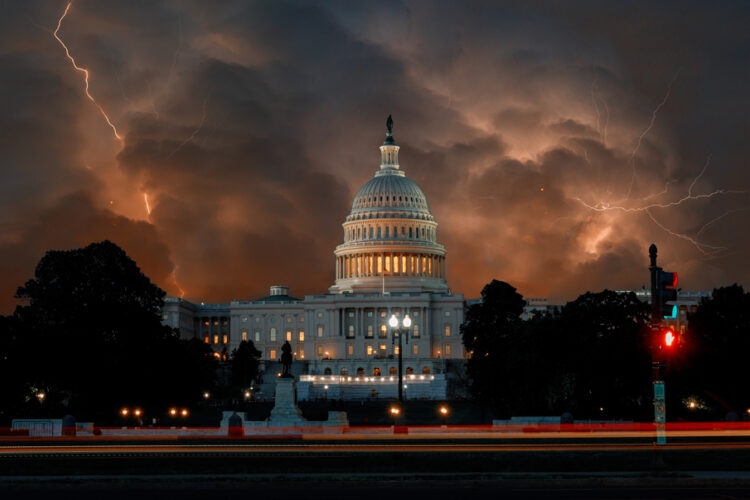Elon Musk, never shy about generating headlines, once said he wanted to cut US government waste and spending by $2 trillion. As a result, President Trump said he could lead a new department called the Department of Government Efficiency (Doge) to implement his ideas.
Mr Musk is unlikely to want to resign from his various business positions and would find it difficult to stick to the collective script in cabinet. After consideration, the Trump team have found a way to create Doge without, they hope, of falling foul of laws and rules governing the establishment of branches of government. They also hope its structure will keep Mr Musk out of trouble over conflicts of interest and his unwillingness to speak in toned-down, bureaucratic language. Now we know how they want Doge to work.
Doge will be a result of the reorganisation of the US Digital Service, a unit of the Executive Office of the President that provides IT consultation to federal agencies. Its remit will be narrowed to applying new computing to obtain efficiencies. It will report to the Chief of Staff Susie Wiles at the White House. It will not subtract from the executive powers of the office of the president nor of the departments of government it seeks to influence.
There will be an 18- month US Doge Temporary Service Organisation which may be the one Mr Musk will seek to energise. It is not certain he will be its official head, as there are rules over eligibility and disclosures of interests. The aim of this body is to help every department generate and implement plans for higher productivity.
Each agency or department head will need to appoint four people as a Doge team for their part of government. There will be a team leader, an engineer, a human resources person and a lawyer. Clearly, the aim is to reduce headcount and gain smarter working from more computing. This will proceed in parallel to the general requirements other Executive Orders roll out across Washington.
Other measures to boost productivity
President Trump issued orders to require working in the office. He imposed a recruitment freeze whilst departments work out new staffing plans. He announced a ban on new regulations pending a review of whether the ones in draft are necessary. He seeks to ban new agreements for contract workers in the private sector to undertake more government tasks to prevent that way round the recruitment ban.
The president wants to abolish the Department of Education, leaving it to individual states of the union and school boards to run things. This would need Congressional approval and is not being mentioned as an urgent priority. There have been stories of merging various departments and bodies to slim them down and reduce overheads, but no plans have yet been announced by the White House.
Plans to remodel the shape and size of government seem to have been delayed by the complexity of the task. They have probably not gone for it urgently, as it could entail lots of battles with courts and Congress.
President Trump has identified the ‘net-zero’ activities as a big area where he will want much less action.
Cutting waste and overhead usually needs cutting some things governments do as well. Government bureaucracies are good at defending their staff and cost base and have on their side the argument that the law and government programmes require their work. That is why programmes to slim government usually require reductions in work, ending of programmes and repeal of laws to get larger reductions in cost.
President Trump has identified the ‘net-zero’ activities as a big area where he will want much less action. He is rolling back subsidy and regulatory programmes that push green products over fossil-fuel activities. There could be substantial savings there, starting with the reduced subsidies and leading on to less regulators.
He has targeted diversity, equity, and inclusion (DEI) work within personnel departments, wanting this wound down with the specialist staff removed. He is seeking to take the 'E' out of ESG (environmental, social and governance) and sideline DEI. He thinks more work will be done if everyone is required to work in the office and probably expects some to resign or retire rather than return to the five-day-a-week commute. There are two million civilian staff in the government who will become part of a productivity and personnel plan in future.
There is a natural and inflationary pressure upwards on Medicare and Medicaid which he will need to meet as demand rises. He will want to increase defence spending, with plans for a much-improved domestic defence against drones and missiles. He will allow an increase in state spending on technology, as his administration pursues higher productivity.
The US technology giants look are likely to do well out of the federal government in the next couple of years. He will spend more on border security, though would expect reductions in spending as offset as the numbers of illegals needing assistance reduces.
Impact on the deficit and bond markets
The fact that the US economy is already growing much faster than European economies means it is not easy for the new government to boost it significantly. Predecessor President Joe Biden administered a huge fiscal stimulus to offset the impact of the Federal Reserve’s monetary tightening.
Faster growth is a way to reduce the deficit, leading as it does to stronger government revenues and President Trump aims to get more tax revenue from three main sources. The “drill, baby, drill” policy leads to more oil and gas taxation in what is a tax-rich sector. A boost to the overall growth rate helps revenues. Increasing tariffs brings in more money. These will help with deficit reduction.
On the other side of the ledger, it is very unlikely the government will flush out $2 trillion of cost savings. ‘Net-zero’ rollback and greater efficiency will help, but there will be temptations to spend this on defence and more tax cuts.
The US is likely to run hot by advanced country standards but still with a large deficit. This means interest rates will stay higher for longer. It is unlikely the deficit becomes difficult to fund, given world demand for quality bonds offering a real interest rate.
Relative to their size, weaker economies in Europe have been able to increase their debts higher than the US without undue trouble, whilst Japan has borrowed more than twice as much as most of them over several decades – so far without difficulty. Japan is now raising its interest rates, which could get painful given the totals of debt. The US has already put interest rates up a lot to more realistic levels for savers and can handle the interest costs.
Nothing on this website should be construed as personal advice based on your circumstances. No news or research item is a personal recommendation to deal.
Elon Musk, Doge and the large US deficit
Read this next
The many problems facing the EU
See more Insights



